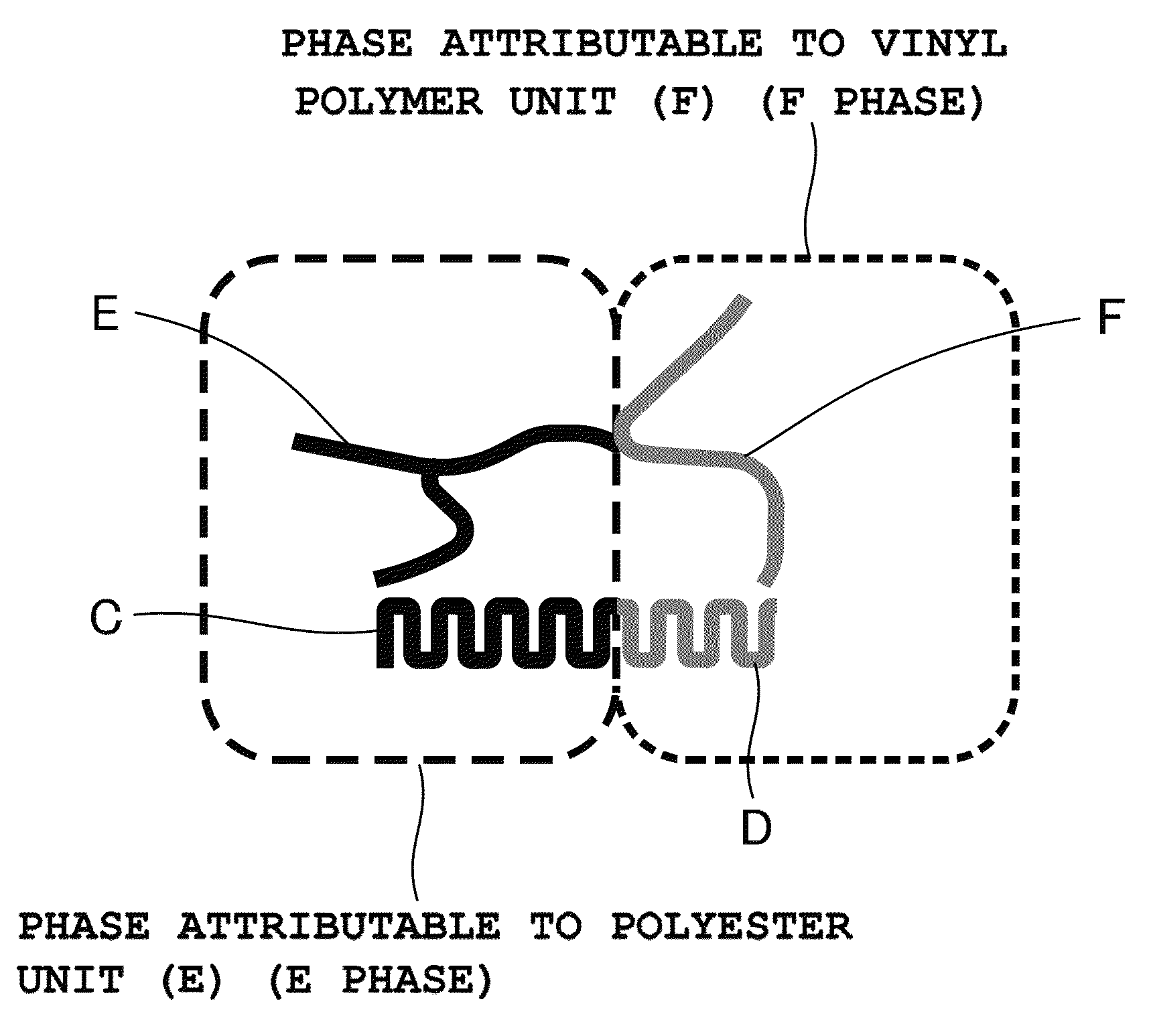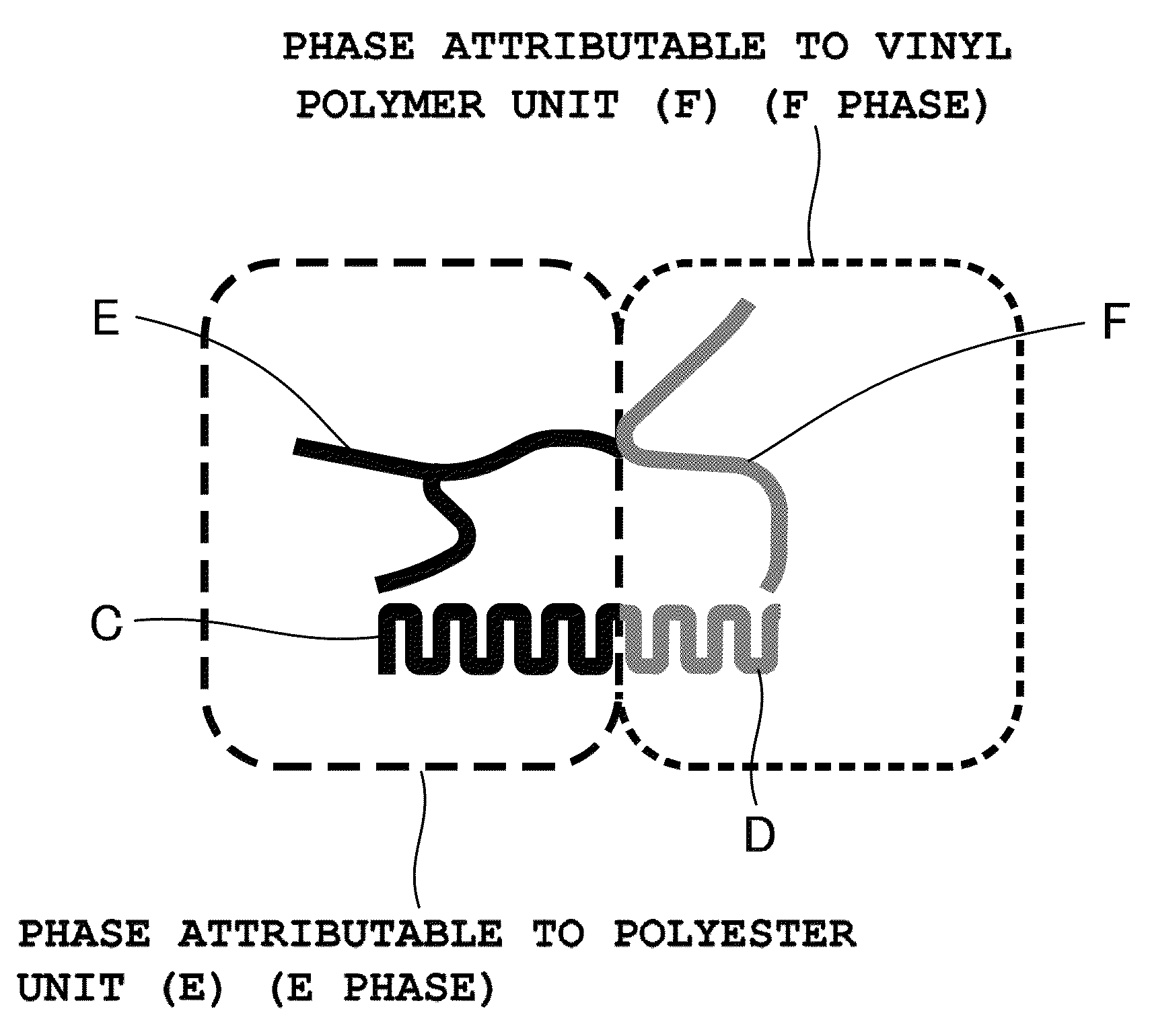Toner
a technology of toner and nozzle, applied in the field of toner, can solve the problems of increasing the susceptibility to difficult to save energy or shorten the wait time, and increasing the likelihood of poor toner fixing performan
- Summary
- Abstract
- Description
- Claims
- Application Information
AI Technical Summary
Benefits of technology
Problems solved by technology
Method used
Image
Examples
example 1
[0307]In the present example, a commercially available color laser printer in the form of the Color Laser Jet CP4525 (Hewlett Packard Co.) was used to evaluate the resulting Toner 1. Evaluations were carried out as described below after replacing the toner installed in the above-mentioned color laser printer with the Toner 1 produced in the present example.
[0308](1) Low-Temperature Fixability when Using Heavy Paper (Upper Limit Fixation Speed)
[0309]The fixing unit of a commercially available color laser printer in the form of the Color Laser Jet CP4525 (Hewlett Packard Co.) was removed and an external fixing unit was fabricated so as to allow the fixation temperature, fixing nip back pressure and processing speed of the fixing apparatus to be set arbitrarily. Laser copier paper (GF-209, Canon Inc., A4 size, basis weight: 209 g / m2) was used for the paper and a black cartridge was used for the evaluated cartridge evaluated in an environment at a temperature of 23° C. and relative humi...
PUM
| Property | Measurement | Unit |
|---|---|---|
| melting point | aaaaa | aaaaa |
| melting point | aaaaa | aaaaa |
| Tg | aaaaa | aaaaa |
Abstract
Description
Claims
Application Information
 Login to View More
Login to View More - R&D
- Intellectual Property
- Life Sciences
- Materials
- Tech Scout
- Unparalleled Data Quality
- Higher Quality Content
- 60% Fewer Hallucinations
Browse by: Latest US Patents, China's latest patents, Technical Efficacy Thesaurus, Application Domain, Technology Topic, Popular Technical Reports.
© 2025 PatSnap. All rights reserved.Legal|Privacy policy|Modern Slavery Act Transparency Statement|Sitemap|About US| Contact US: help@patsnap.com



